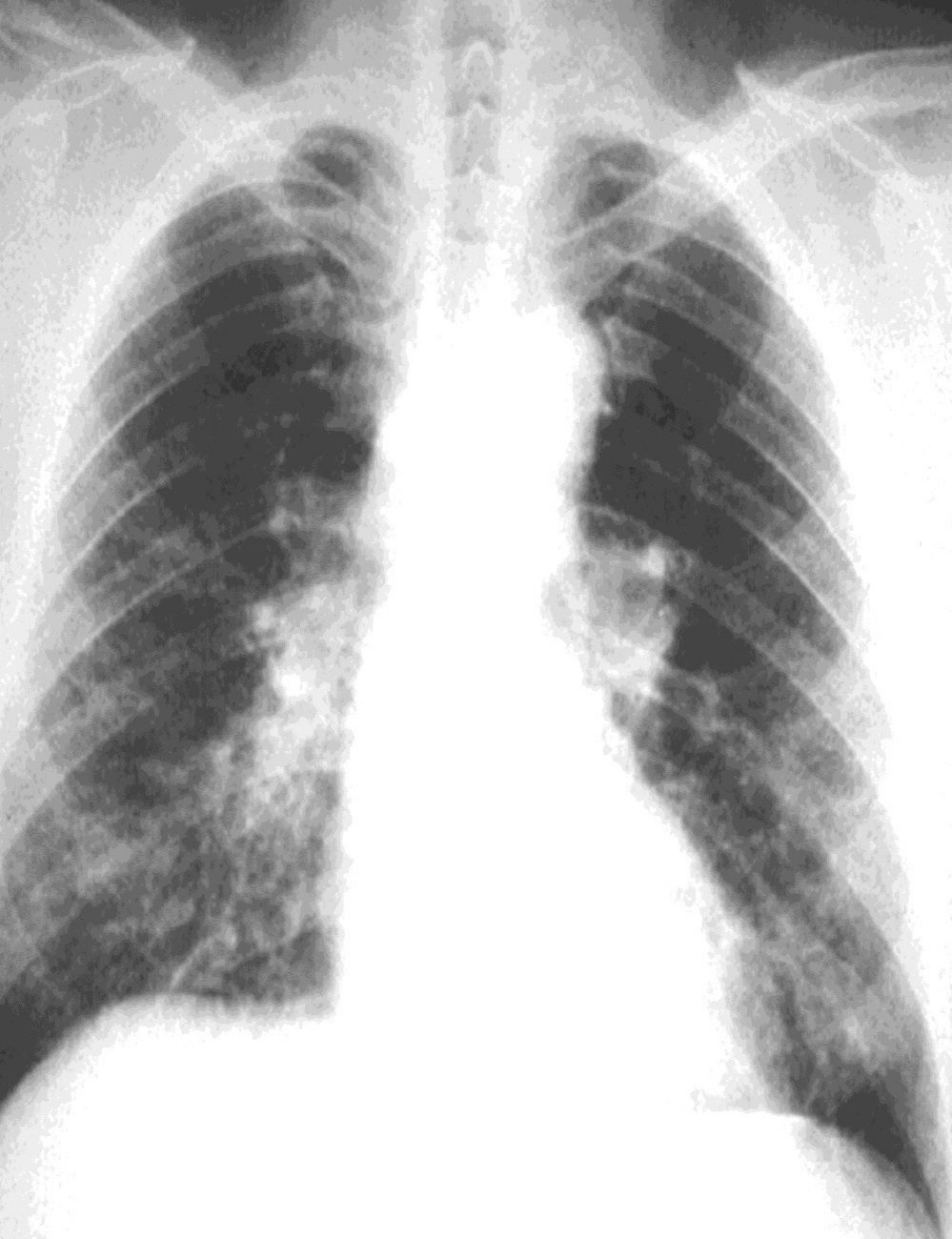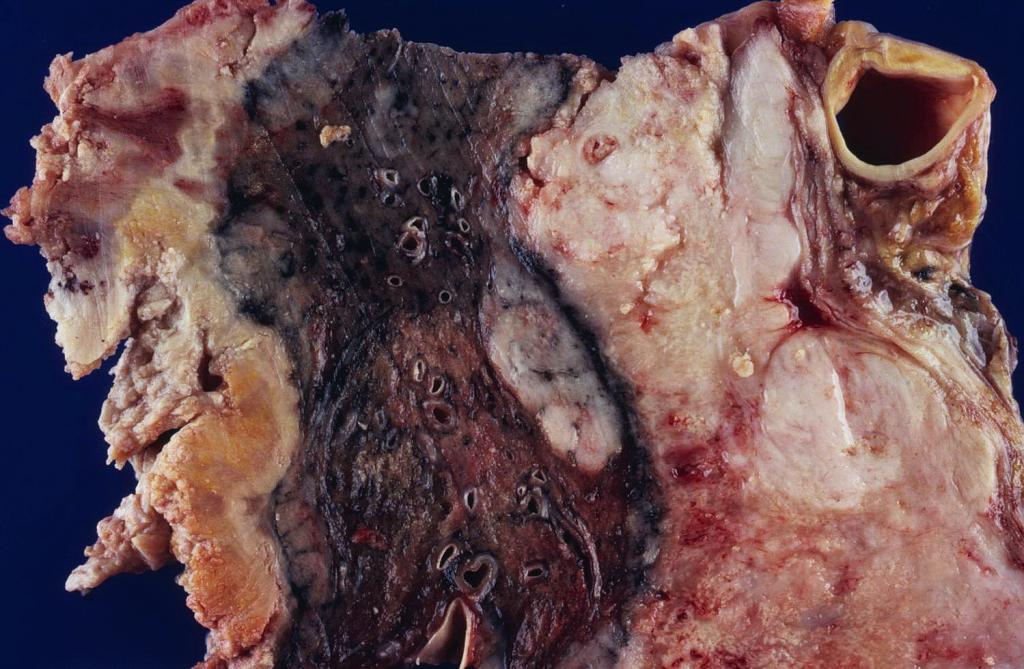The Health Risks of Asbestos Poisoning

Asbestosis
What is it?
Asbestosis is an incurable lung disease characterised by the scarring of lung tissue caused by the inhalation of asbestos fibres. Unlike lung cancer or mesothelioma, people with asbestosis can live for decades after diagnosis but as time passes, the individual’s condition will deteriorate and require more treatment.
Symptoms:
Asbestosis is caused by sharp, minuscule asbestos fibres becoming lodged in the lung tissue. Over the period of 20 to 30 years, the fibres cause inflammation and eventually scarring as the body attempts to heal. The severity of the symptoms depends of the length of an individual’s exposure to asbestos and include:
- Swelling in the face and neck
- Shortness of breath and coughing
- Chest pain
- Loss of appetite and weight loss
- Swallowing difficulties
- Blood in the lung mucus (sputum)
- Crackling noise in breathing
- High blood pressure/hyper tension
- Deformed fingers
Treatment:
Due to the fact that no cure currently exists for asbestosis, the treatment methods commonly offered are designed to manage the symptoms rather than treat the cause. Along with healthier lifestyle and diet changes, supplemental oxygen and antibiotics, several treatment options are available for sufferers of asbestosis.

- Pulmonary rehabilitation: a long-term treatment that teaches better breathing methods, exercise techniques and stress relief.
- Prescription medications that ease pain and dilute secretions.
- Respiratory physiotherapy to remove lung secretions
For more information on asbestosis, check out the Australian Asbestos Network.
Benign Pleural Disease
This is the most common form of disease found in people that have been exposed to asbestos. Benign pleural diseases are usually not life threatening but can cause extreme discomfort and pain, and can be symptomatic of late stage mesothelioma. The four main types of asbestos related pleural disease include:
- Pleural plaques: these are patches of fibrous thickening that develop between the rib bones and the lining of the lung. Plaques are generally not viewed as a serious health issue but can cause painful and difficult breathing patterns.
- Pleural effusions: this occurs when fluid is leaked into the space between the lung and the membrane that lines it. Although not life threatening on its own, pleural effusions cause extreme chest pain can reoccur even after treatment.
- Pleural thickening: this is when the lining of the lung tissue becomes irritated resulting in lesions and swelling. In unusual cases, pleural thickening can be life threatening as it severely disrupts breathing patterns.
- Pleuritis: this occurs after the lining of the lung tissue (pleura) becomes inflamed causing significant chest and shoulder pain.
In most cases the best treatment for pleural disease is lifestyle changes (ie quitting smoking) and appropriate exercise. If you are experiencing any of these symptoms you should contact your doctor immediately as it may be indicative of lung cancer.
Mesothelioma

What is it?
Mesothelioma is a form of cancer that can take anywhere between 20 and 50 years to display symptoms. It is caused by asbestos fibres that become lodged in the tissue surrounding the lungs, resulting in cellular damage that eventually leads to tumour growth. This is known as pleural malignant
mesothelioma and represents the most common form of this disease. However asbestos inhalation can also cause this cancer to occur in the lining of the abdominal cavity (peritoneal) and the heart (pericardial).
Symptoms:
The different forms of mesothelioma have varying symptoms of which more information can be found out about here. Symptoms, even those displayed in the later stages of the disease’s progression, can be subtle and unnoticeable. Early signs can be so insignificant that even doctors can misinterpret them as a simple ache or illness. The most common symptoms for mesothelioma include:
- Constant fatigue
- Loss of appetite and weight loss
- Chest pain
- Breathing difficulties
- Dry coughing
- Shortness of breath
Current medical research is aimed at finding earlier diagnosis systems but there are several more symptoms that indicate mesothelioma has spread to other parts of the body. These symptoms include:
- Difficulty swallowing
- Obstruction of the superior vena cava (a vessel that carries blood into the heart) leading to shortness of breath and facial swelling
- Low blood sugar levels (hypoglycaemia)
- Damage to nerves attached to voice box (laryngeal) leading to harsh breathing and speaking
Treatment:
Currently no cure for mesothelioma exists but there several treatment options available that can alleviate symptoms and extend life expectancy.
- Surgery: this treatment method can be used to remove tumours, alleviate pain for improved quality of life or to secure a biological sample for diagnosis.
- Chemotherapy: a chemical infusion into the bloodstream that aims to kill cancer cells, reduce the size and spread of tumours and prolong survival. Unfortunately chemotherapy cannot cure mesothelioma and comes with significant side effects including hairs loss, nausea and weight loss.
- Radiation therapy: this is used to stunt the growth of tumours and has been known to increase life expectancy and alleviate pain. Radiation therapy can be used at any stage of mesothelioma and includes the side effects of skin irritation, inflammation of the oesophagus, fatigue and nausea.
Beside mesothelioma and lung cancer, asbestos poisoning has been linked to the following cancers:

- Prostate
- Gallbladder
- Hodgkin’s lymphoma
- Non- Hodgkin’s lymphoma
- Kidney
- Leukemia
- Gastrointestinal
- Colorectal
- Laryngeal
- Breast
- Ovarian

